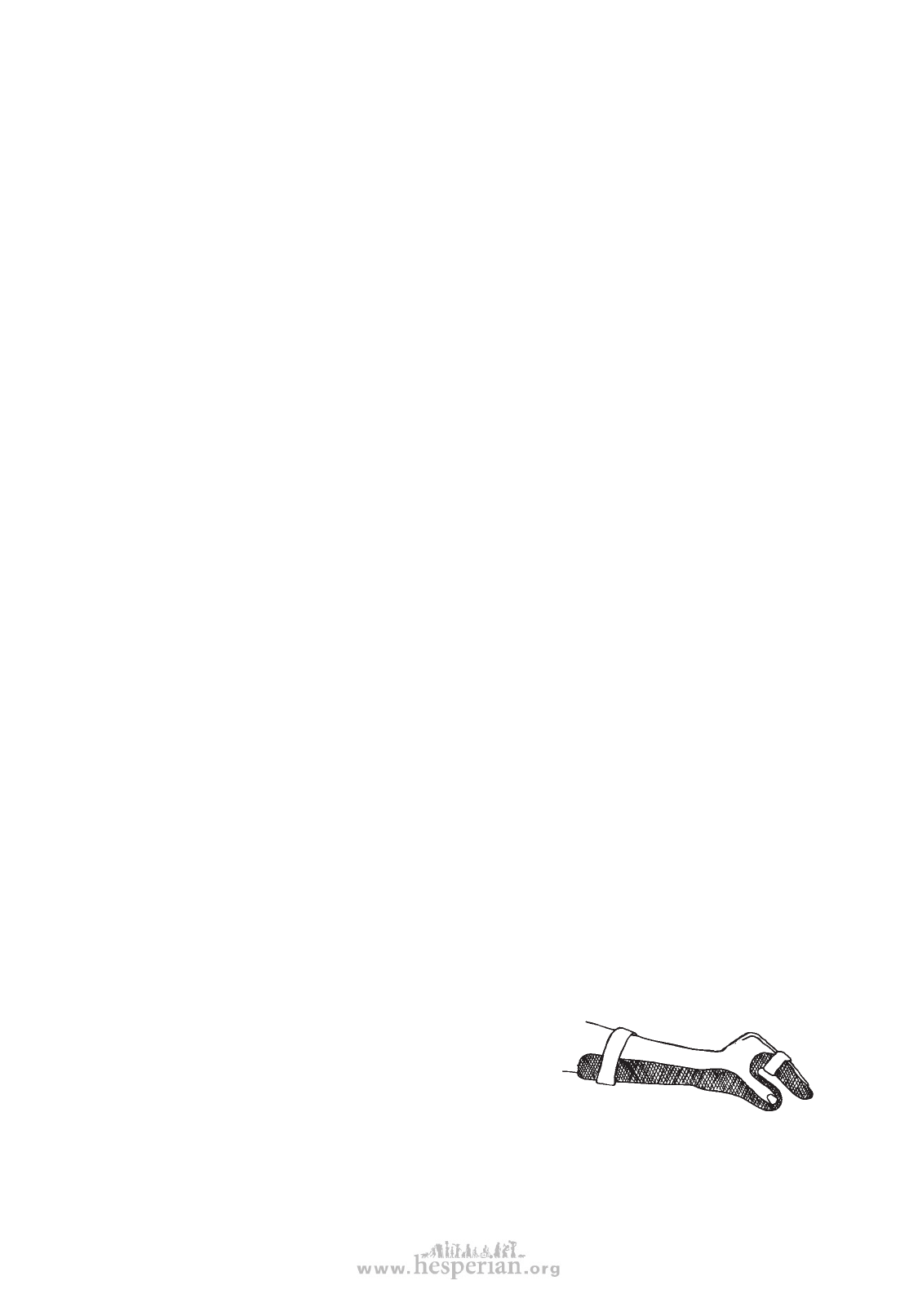
LEPROSY
Treatment of leprosy reactions
As we mentioned on p. 215, feeling loss, paralysis, and deformities need not happen
to a person with leprosy. Early diagnosis and treatment together with quick care of
leprosy reactions should prevent the development of many deformities.
Care of a leprosy reaction has 4 objectives:
• Prevent nerve damage that causes loss of feeling, paralysis, and contractures.
• Stop eye damage and prevent blindness.
• Control pain.
• Continue with medicine to kill leprosy bacilli and prevent the disease from getting
worse.
221
Care includes:
1. Medicine to reduce pain and inflammation
For mild reactions (skin inflammation but not pain or tenderness of nerves) use
aspirin or ibuprofen. For dosage and precautions, see p. 134.
For severe reactions (pain along nerves, increasing tingling, numbness or weakness,
eye irritation, or painful testicles) corticosteroids (prednisolone) may be needed.
Because this is a medical emergency and because corticosteroids are dangerous
and often misused medicines, if at all possible get experienced medical advice
before using them.
2. Anti-leprosy medicine should be continued throughout the leprosy reaction.
Clofazimine helps to reduce Type 2 reactions and fights the leprosy bacilli.
The dose of clofazimine can often be increased (to 200 mg. daily in adults) and
later reduced as the reaction lessens. However, for severe reactions that damage
nerves, prednisolone is needed.
3. Splinting and exercise
Holding the affected limbs in splints during a severe reaction helps reduce pain
and prevent nerve damage and contractures. (See Chapter 8.)
Joints should be splinted in the most useful
position. Splints can be made of plaster
bandage or molded plastic (see p. 540). Very
carefully pad splints for hands or feet that do
not feel pain.
Leave the splint on day and night until pain and
inflammation are gone. Remove only for gentle
range-of-motion exercise at least once a day.
(See Chapter 42.)
A good splint for the hand—to avoid
contractures and maintain a useful
position.
disabled village children